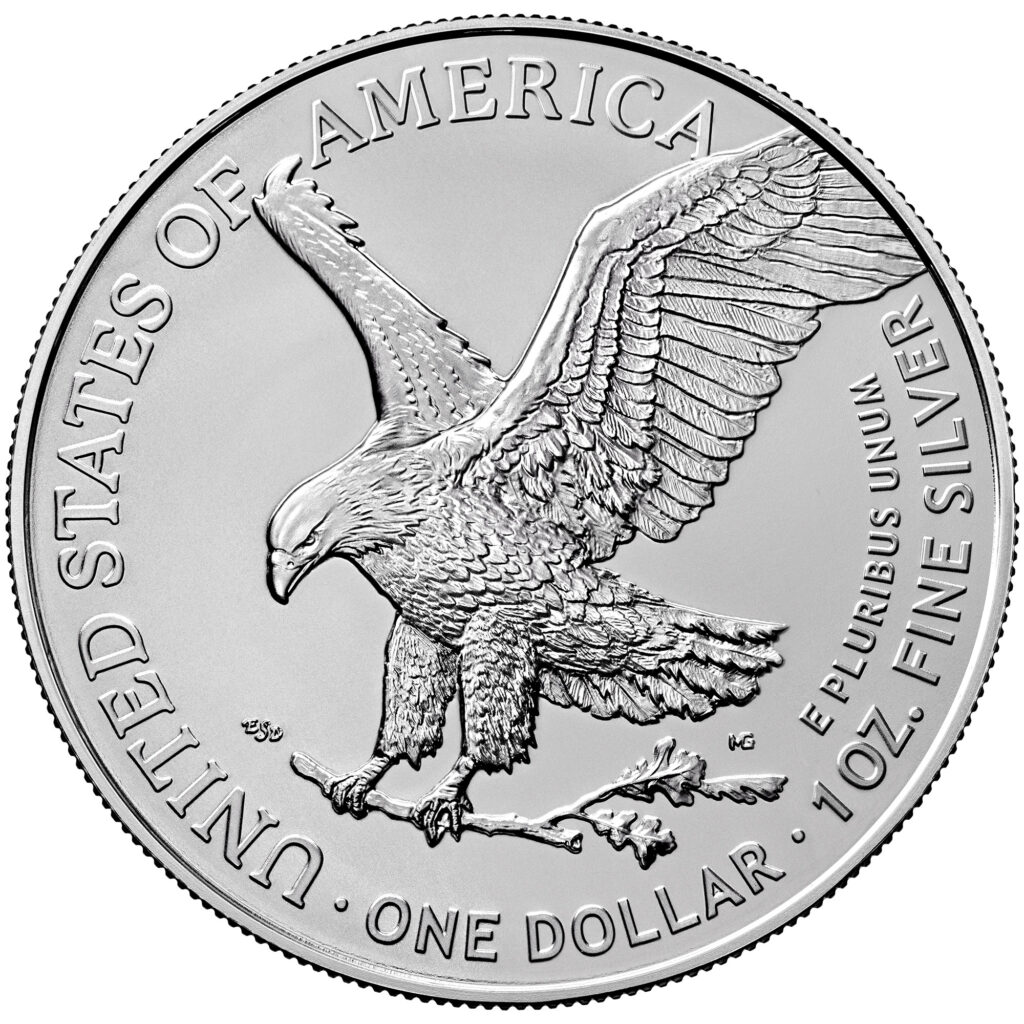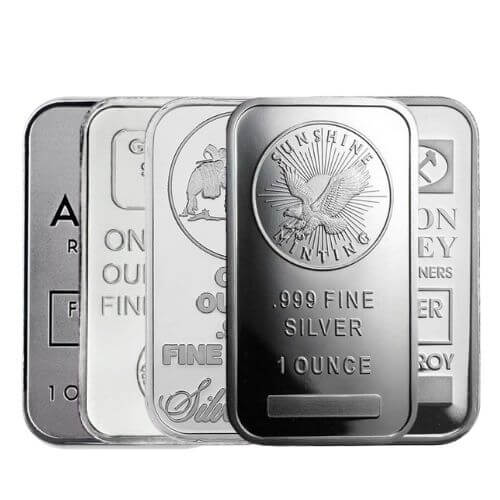What is Silver’s Highest Price Ever? | Historical Price Charts and Analysis (Updated For 2024)

At a Glance:
- Silver’s highest price ever was $49.45 in January of 1980, when the Hunt Brothers successfully hoarded enough silver to inflate its price.
- In 2011, silver hit a decades-long high of $48.70.
- Historical price data suggests that silver may be more volatile than some investors believe.
What is Silver’s Highest Price Ever?
As gold continues to set new price records, some investors predict that silver could have a breakout year in 2024. As of April 4th, the precious metal is trading at $27.24. This is a far cry from silver’s all time high. At one point in time, silver sold for a jaw-dropping $49.45 per troy ounce.
Silver’s highs and lows have always been extreme. Some investors believe silver is a consistent asset, but silver prices are historically volatile. Morgan Stanley finds that silver is 2-3 times more volatile than gold. In other words, investing in silver can be a wild ride for investors.
So what is silver’s highest price ever? Silver’s all-time high is $49.45, which was the metal’s price on January 18, 1980. In 2011, silver bullion traded at $48.70/oz, nearly eclipsing the 1980 record and setting a decades-long all-time high. While the 2011 silver price spike can be explained by inflationary concerns and geopolitical stressors, silver’s true all-time high in 1980 was the result of a scheme by three billionaire brothers to corner the silver market.
Today, we’re taking a look at over 50 years of silver price-action to explore the story behind silver’s highest prices ever.
Historical Silver Price Charts (1969-2023)
To illustrate silver’s highest prices ever, we’ve created a chart demonstrating silver’s yearly highs for every year since 1969.

Two major price spikes stand out on our graph. The first happened from 1978-1980. During this period, silver’s value shot up dramatically from $6 to $49.45. An equally extreme crash directly followed, and silver prices eventually settled back to around $6/oz by 1986. The peak of this price spike happened on January 18, 1980. On that day, silver hit an all-time high that we’ve never seen since.
Another contender for silver’s highest price ever happened decades later in April 2011. Silver’s price appreciation during this period wasn’t nearly as dramatic as its 1980 run. A price jump in 2005 kickstarted silver’s price run leading up to its peak on April 29, 2011. In six years, silver prices skyrocketed from around $9 to a decades-long high of $49.21.
Silver’s All Time High – How Expensive Was Silver?
On the surface, it appears that silver nearly reached an all-time high in 2011. But if we adjust these figures for inflation, the sheer scale of silver’s 1980 high becomes clearer.

On January 18th of 1980, silver traded at an all-time high of $49.45. Even without considering inflation, that’s a spot price that would make most silver stackers jump for joy. Adjusted for inflation, silver traded for over $140 in today’s money. 2011’s record-breaking silver prices may seem impressive, but they didn’t even get close to silver’s true highest price ever.
The Story of Silver’s Biggest Price Spike
To understand why silver hit a record high in January of 1980, we need to take a look at one of the craziest stories in the history of silver. From 1978 to 1980, silver’s yearly high jumped from $6 to $49.45. That’s an increase of over 824%. As you might have guessed, a dramatic spike like this doesn’t happen by accident.
In reality, silver hit an all-time high of $49.45 in 1980 because the wealthy Hunt brothers attempted to corner the silver market.
The Hunt Family’s Attempt to Corner the Silver Market
The Hunts are one of America’s richest families. Sometime in 1978, the family began buying up as much silver as they could. Three Hunt brothers, Nelson, William, and Lamar, believed that silver was an undervalued asset. They thought silver should be worth quite a bit more than it was. Remember: silver was trading at just over $6 per ounce in 1978.
Their bid was successful. Over the next two years, they amassed hundreds of millions of ounces of silver. Their objective was to corner the silver market and drive prices as high as they possibly could.
When the Hunt brothers ran out of the capital necessary to buy physical silver, they started buying futures. Silver futures are a method of betting on silver prices. The three brothers bought hundreds of millions of dollars in silver futures.
The plan to corner the silver market had a pretty big flaw, though. They purchased many of their silver futures on margin. Trading on margin means that an investor borrows money from an exchange to place their order. When exchanges caught wind of the Hunts’ plan to corner the silver market, they placed new restrictions on how many silver futures the family could buy using margin.
Since they were no longer able to build their silver stack higher, prices for the metal began to crash rapidly in 1980.
Silver’s Worst Price Crash
As prices crashed, exchanges issued a margin call to the Hunt Brothers. A margin call is a request for a margin trader to pay a set amount of money to make up for the losses incurred from their investment.
Since the Hunt brothers bought so much silver on margin, the cost of paying the margin call would bankrupt them. Silver traders panicked, as a default on an investment of that size could potentially collapse the market entirely. Silver prices fell by over 50% in four days after exchanges placed new restrictions on the Hunts’ silver hoarding activities.
Following the margin call and subsequent panic, silver prices fell even further. By 1982, the metal had returned to its original 1978 price of around $6/oz.
2011 Silver High – What Caused Silver’s Price Run?
Silver’s highest price ever happened in 1980 and was a result of the Hunt family’s (failed) attempt to corner the silver market. In 2011, silver investors experienced another golden age. This time, however, silver’s price run didn’t happen because of meddling from wealthy traders.
Fears over increasing inflation rates and a spike in industrial demand drove silver prices in 2011. Governments all around the world reported heightened inflation, which concerned investors who had bet heavily on traditional assets. They turned their attention to silver, which many experts consider a consistent safe haven asset.

Geopolitical stressors also played a role in the bullish 2011 silver market, which saw silver hit a decades-long high of over $49. Tensions continued to rise in the Middle East, and fears of international intervention/conflict heightened investor demand for physical precious metals like silver.
Analysis: Highest Silver Prices in History
Two of silver’s highest prices ever paint drastically different pictures of how silver price-action happens. Investors shouldn’t hold their breath for a 1980-like silver price run. In 1980, silver hit an all-time high because a group of wealthy investors (almost) succeeded in cornering the market.
Investors researching the best time to buy silver should consider the 2011 silver market. Unlike silver’s 1980 high, the 2011 silver price peak is easy to explain using traditional indicators and correlating factors.
Historical Silver Price Analysis – What Can We Learn From Silver’s Price History?
Analyzing the silver market of 2011 can give investors insights about what to expect from the precious metal in the next few decades. In fact, some analysts say that 2024 could see a silver breakout akin to what the market experienced in 2011.
2024 Silver Price Forecast – Will Silver Hit $30/oz Again?
Research from Ahead of the Herd draws a correlation between heightened demand for silver in 2011 and demand for the metal in 2024. One theory behind silver’s unparalleled 2011 price run is that demand for solar panels – which use silver – led to increased industrial reliance on the precious metal.
For investors who closely follow global silver demand figures, 2024 might be the perfect staging ground for a reenactment of 2011’s legendary silver price run. The International Energy Agency finds that the world’s renewable energy capacity increased by 50% in 2023. Experts anticipate that global demand for renewable energy technologies will continue to grow in 2024 – and beyond.
Since silver plays such a crucial role in renewable energy projects, increased demand for green technologies might be the perfect catalyst for a massive silver price run this year. Compounding silver’s impressive 2024 potential is a laundry list of geopolitical uncertainties. Wars in both Gaza and Ukraine, as well as problematic inflation rates, might incentivize investors to hedge their bets with silver bullion.
You might also be interested in:
About The Author
Michael Roets
Michael Roets is a writer and journalist for Hero Bullion. His work explores precious metals news, guides, and commentary.
